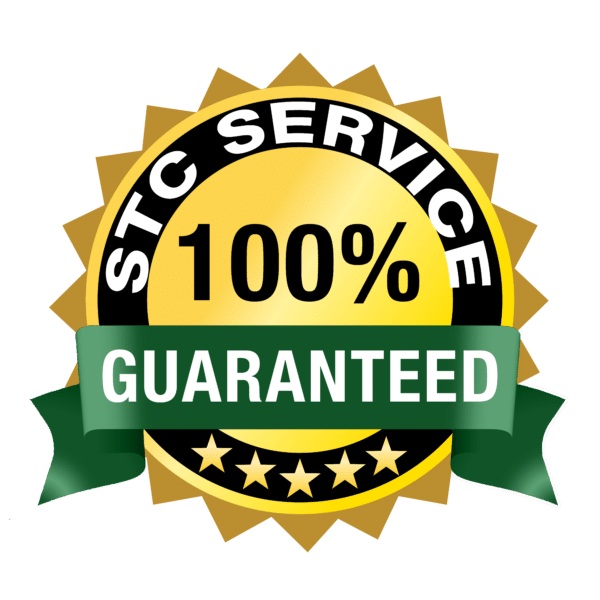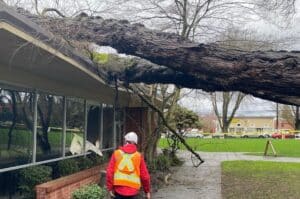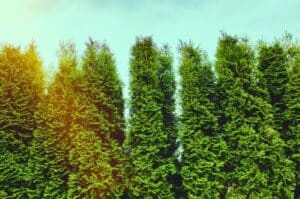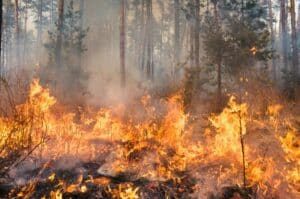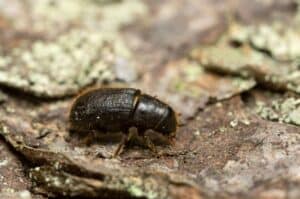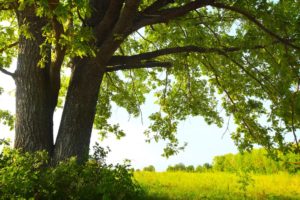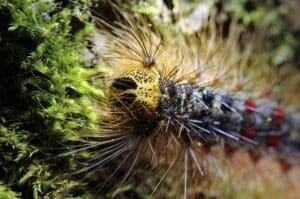Dutch Elm Disease in Seattle: What Arborists Are Doing to Slow the Spread
Save Seattle’s elms from Dutch elm disease. Explore expert tree care tips from Certified Arborists that prevent losses & protect your landscape investment.
The towering American elms gracing Madison Park’s tree-lined streets represent more than natural beauty; they’re living investments worth tens of thousands of dollars and irreplaceable neighborhood character. So, when Dutch elm disease threatens these magnificent trees, property owners need more than basic treatments. They need comprehensive management strategies designed for Seattle’s unique conditions and high-value elm populations.
In neighborhoods like Madison Park, Laurelhurst, and Capitol Hill, where mature elms define the community character and significantly impact property values, effective Dutch elm disease management requires a clear understanding of the disease and proactive strategies to preserve these iconic trees.
Key Takeaways
- Early detection programs can identify Dutch elm disease before visible symptoms appear, dramatically improving treatment success rates.
- Preventive fungicide treatments applied in March-May provide significant protection for healthy elms when combined with proper cultural care.
- Comprehensive management addresses root health, soil conditions, and beetle control alongside direct disease treatment.
- Professional monitoring every six months ensures early intervention and protects property investments in the long term.
What Is Dutch Elm Disease and How Does It Spread in Seattle?
Dutch elm disease (DED) stems from two aggressive fungi: Ophiostoma ulmi and the more virulent Ophiostoma novo-ulmi. These pathogens attack the tree’s vascular system, blocking water and nutrient transport and ultimately causing tree death within 1-3 years if left untreated.
The disease spreads through two primary pathways: boring bark beetles and shared root systems. In Seattle’s affluent neighborhoods, these transmission methods pose heightened risks due to mature tree populations and dense plantings.
Elm Bark Beetle Transmission
Native and European elm bark beetles carry fungal spores between trees. These beetles breed in dead or dying elm wood, emerging with spores that they deposit when feeding on healthy trees. In neighborhoods with high elm density, beetle transmission can quickly spread disease across multiple properties.
Root Graft Networks
Mature elms planted in proximity – common along the tree-lined streets of Madison Park and Laurelhurst – develop underground root connections called grafts. These natural bridges allow rapid disease transmission directly through root systems, often causing faster and more severe infections than when transmitted through beetle activity.
Seattle’s Current DED Status
The City of Seattle actively monitors Dutch elm disease across the city, treating public elms with preventive fungicide injections every three years. However, the majority of infected trees occur on private properties, making professional management essential for neighborhood-wide protection.
Common Signs of Dutch Elm Disease
Successful Dutch elm disease management begins with early detection. The earlier the disease is identified, the more treatment options remain available and the higher the success rates for tree preservation.
Early Stage Symptoms (Best Treatment Window)
- Flagging: Individual branches develop yellowing, wilting leaves that curl but remain attached to the branch.
- Premature Leaf Drop: Leaves fall during the spring or summer growing season.
- Branch Dieback: Tips of branches begin dying back from the ends.
- Uneven Crown: Some branches appear healthy while others show stress.
Advanced Symptoms (Limited Treatment Options)
- Extensive Crown Dieback: Multiple large branches or entire sections of the crown are affected.
- Sapwood Streaking: Brown or black streaks are visible in freshly cut wood.
- Rapid Decline: Tree condition deteriorates quickly over weeks or months.
- Secondary Infections: Other pathogens begin to attack the weakened tree.

This distinctive brown streaking in elm sapwood confirms Dutch elm disease infection and helps arborists assess disease progression. Photo courtesy of: William Jacobi, Colorado State University, Bugwood.org.
Professional Diagnostic Methods
While property owners can monitor for visible symptoms, definitive diagnosis often requires professional assessment, especially in the early stages when symptoms may be subtle or confused with other tree health issues. Seattle Tree Care’s ISA Certified Arborists use advanced diagnostic techniques beyond visual inspection:
- Resistograph Testing: Measures wood density to identify internal decay before external symptoms appear.
- Laboratory Confirmation: Wood samples tested for fungal presence and species identification.
- Vascular Assessment: Evaluation of water transport efficiency through specialized testing.
- Root System Analysis: Assessment of root health and graft connections.
How to Treat and Protect High-Value Elms from Dutch Elm Disease
Effective Dutch elm disease management in Seattle’s premium neighborhoods requires a multi-faceted approach that addresses the disease, the tree’s overall health, and site-specific conditions that influence treatment success.
Preventive Fungicide Programs
Preventive treatment represents the most effective strategy for protecting valuable elms. When applied correctly using professional-grade systemic fungicides, preventive treatments can provide excellent protection rates for 2-3 years when applied to healthy trees.
Timing is critical for fungicide effectiveness. Seattle’s Pacific Northwest climate requires treatments between March and early May, when sap flow is optimal and before peak beetle activity.
Strategic Injection Methodology
Proper fungicide placement is also essential for treatment success, particularly in large-diameter elms common in premium neighborhoods:
- Multiple Injection Points: 8-12 sites around the tree circumference ensure complete coverage.
- Root Flare Placement: Injections at the exposed root flare level, not surface soil.
- Calculated Dosage: Treatment volume based on tree diameter, health status, and site conditions.
- Pressure-Regulated Delivery: Controlled injection pressure prevents tissue damage.
Root System Optimization
Mature elms in established neighborhoods often suffer from root system problems that compromise treatment effectiveness. Our comprehensive approach addresses these foundational issues:
Root Flare Excavation
The root flare is the area where the tree’s trunk transitions into the root system, and it should be visible at ground level on healthy trees. However, in mature neighborhoods, decades of landscaping, soil accumulation, and construction often bury this critical area several inches or even feet below grade, creating serious health problems and compromising treatment effectiveness.
When the root flare is buried, fungicide injections applied at surface level may not reach the tree’s main vascular system, leading to treatment failures. Professional root flare excavation using air spading technology provides multiple benefits:
- Exposes proper injection sites for maximum fungicide uptake
- Improves root health by increasing oxygen availability
- Eliminates moisture problems that stress trees and promote disease
- Reveals and allows correction of girdling roots
Soil Health Improvement
Compacted soils, common in urban environments, also contribute to issues with root function and treatment effectiveness. Our soil management includes:
- Deep-Root Fertilization: Delivering nutrients directly to active root zones where they’re most needed, bypassing compacted surface soil.
- Organic Matter Incorporation: Adding compost, aged mulch, or other organic materials to heavy clay or compacted soils to improve structure and water infiltration while providing slow-release nutrients and supporting beneficial microorganisms.
- Mycorrhizal Inoculation: Introducing beneficial soil fungi that form symbiotic relationships with tree roots, helping them absorb nutrients and water more efficiently while improving disease resistance.
- Drainage Enhancement: Installing drainage systems or soil amendments to prevent waterlogging that stresses trees and creates anaerobic soil conditions that favor harmful pathogens.
Expert Insight: “Many property owners focus solely on the injection treatment, but if the tree’s root system can’t properly distribute that fungicide, you’re not getting the protection you paid for. We start every elm management program by optimizing the root environment, which often means excavating buried root flares and improving soil conditions that have deteriorated over decades.” – Peter Gruenwoldt, Owner of Seattle Tree Care
Integrated Pest Management for Elm Bark Beetles
Since elm bark beetles are the primary vectors spreading Dutch elm disease between trees, controlling these insects is essential for protecting neighborhood elm populations. An integrated approach combines multiple strategies to reduce beetle populations and break the disease transmission cycle, providing more effective and sustainable control than relying on any single method.
Cultural Controls
Cultural controls are non-chemical management practices that reduce beetle populations by eliminating their breeding habitat and disrupting their life cycle. Since elm bark beetles reproduce in dead or dying elm wood, removing these breeding sites forms the foundation of effective beetle management:
- Sanitation Pruning: Removing dead, dying, or damaged wood during dormant season.
- Prompt Disposal: Chipping or burning elm wood to prevent beetle reproduction.
- Firewood Management: Never storing elm firewood unless completely debarked.
- Pruning Timing: Avoiding pruning between April and October when beetles are active.
Targeted Treatments
When cultural controls aren’t sufficient, targeted insecticide applications can reduce beetle populations:
- Bark Sprays: Applied during beetle emergence periods.
- Trap Trees: Strategically stressed or girdled elms that attract beetles for breeding, then treated or removed to eliminate the concentrated beetle population.
- Systemic Insecticides: Tree-absorbed chemicals that kill feeding beetles.
Root Graft Management in Dense Elm Populations
In neighborhoods with closely spaced mature elms, managing root graft networks becomes a critical component of disease prevention. Professional assessment and strategic intervention can prevent rapid disease spread through these underground connections and protect valuable tree investments.
Graft Assessment Methods
Professional assessment is required for determining graft locations and infection risk:
- Root Mapping: Ground-penetrating radar identifies major root pathways.
- Excavation Verification: Physical confirmation of graft connections.
- Health Correlation: Monitoring multiple trees for synchronized symptoms.
- Treatment Response: Tracking fungicide effectiveness across connected trees.
Graft Severance Decisions
When disease threatens connected trees, graft severance may be necessary:
- Infected Tree Isolation: Cutting connections before removal.
- Preventive Separation: Protecting high-value trees from infected neighbors.
- Strategic Barriers: Creating disease breaks in continuous plantings.
- Replacement Planning: Preventing future graft formation.
Seasonal Management Calendar for Seattle Elms
Effective Dutch elm disease management requires year-round attention with activities timed to Seattle’s unique climate patterns and beetle life cycles.
| Season | Primary Activities | Monitoring Focus | Treatment Windows |
| Winter (Dec-Feb) | Dormant pruning, root flare excavation, site preparation | Tree structure, storm damage, planning assessments | Safe pruning period, soil work when dry |
| Early Spring (Mar-Apr) | Preventive fungicide injections, soil treatments | Sap flow initiation, early symptom development | Optimal injection period begins |
| Late Spring (May-Jun) | Complete preventive treatments, beetle monitoring | Beetle emergence, early symptoms, treatment response | Final preventive injection opportunity |
| Summer (Jul-Aug) | Intensive monitoring, emergency interventions | Symptom development, treatment evaluation, water stress | Therapeutic treatments only if essential |
| Fall (Sep-Nov) | Assessment, planning, sanitation activities | Treatment effectiveness, disease progression, winter prep | Pruning window reopens, plan next year’s program |
Timing adjustments may be necessary based on specific weather patterns and microclimate conditions in each neighborhood.
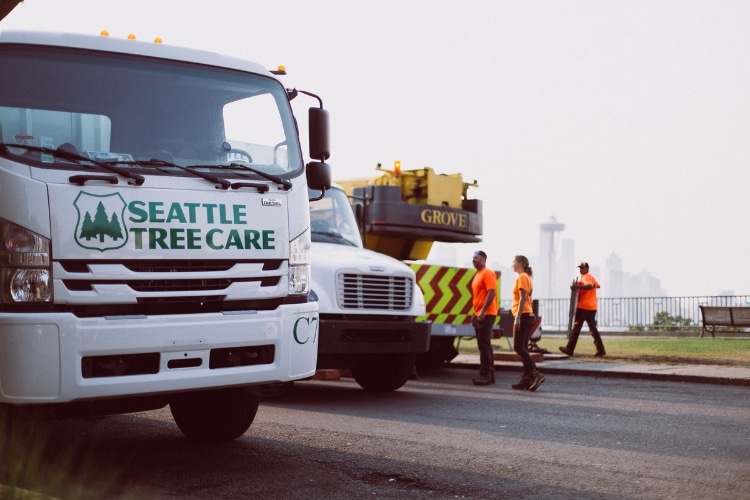
Why Seattle Tree Care Excels in These Complex Environments
Managing Dutch elm disease in Seattle’s premium neighborhoods requires more than basic tree knowledge; it demands deep understanding of local conditions, advanced treatment capabilities, and the expertise to navigate complex urban challenges.
Seattle Tree Care brings unique qualifications to these demanding environments:
- A team of ISA Certified Arborists with extensive experience in Seattle’s specific neighborhood conditions and regulatory requirements.
- The only family-owned, local tree service in the Seattle area with the prestigious TCIA Accreditation industry recognition.
- Advanced diagnostic capabilities, including resistograph testing and laboratory confirmation, for accurate disease identification.
- Specialized equipment access including air spading technology for root flare excavation and precision injection systems.
- Comprehensive approach addressing root health, soil conditions, beetle control, and ongoing monitoring – not just basic injections.
- Local regulatory expertise with experience in Seattle’s tree protection ordinances and permit requirements.
- We have an established neighborhood presence, including municipal contracts for hazard tree removal with the City of Shoreline.
Most importantly, Seattle Tree Care understands that protecting valuable elms, especially in Madison Park, Laurelhurst, and Capitol Hill, requires treating each tree as a long-term investment, not just a one-time treatment opportunity. Our comprehensive management programs are designed to preserve these irreplaceable neighborhood assets for future generations.
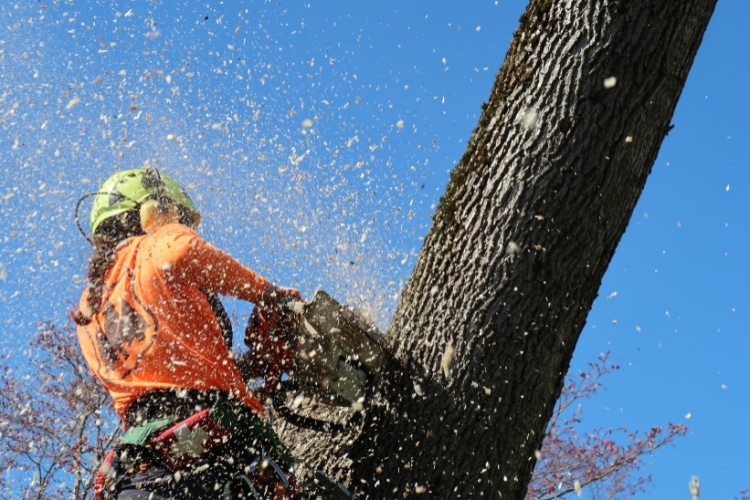
When Tree Removal Becomes Necessary
Despite best management efforts, some elms cannot be saved. Professional assessment determines when removal protects both property and neighboring trees.
We recommend removal when:
- Disease has progressed beyond 30% crown involvement
- Structural integrity is compromised by extensive decay
- Multiple treatment attempts have failed to slow progression
- Tree poses immediate safety risks to people or property
- Removal prevents disease spread to more valuable specimens
Permit Requirements for Treating or Removing Diseased Elms in Seattle
Tree removal in Seattle requires permits for specimens over 6 inches in diameter. Our ISA Certified Arborists handle all documentation and can expedite permits for diseased trees requiring emergency removal.
Replacement Strategy
When elm removal becomes necessary, thoughtful replacement planning helps maintain neighborhood character while reducing future disease risk. The goal is selecting trees that provide similar aesthetic and environmental benefits without the same disease vulnerabilities:
- DED-Resistant Elm Cultivars: ‘Valley Forge’, ‘New Harmony’, ‘Princeton’ maintain the classic elm form and canopy while offering genetic resistance to Dutch elm disease.
- Alternative Species: Trees like London Plane, Zelkova, or American Linden provide similar size and canopy characteristics with different disease susceptibilities.
- Planting Timing: Fall or early spring installation when trees can establish before summer stress, often including soil treatment to address conditions that stressed the original elm.
- Long-Term Planning: Strategic spacing and species diversity to prevent future disease corridors and reduce the risk of neighborhood-wide losses.
Frequently Asked Questions About Dutch Elm Disease in Seattle
How effective is Dutch elm disease treatment for mature trees?
When applied preventively to healthy trees, modern fungicide treatments show 99.5% effectiveness for 2-3 years. Treatment success drops significantly once symptoms appear, making early intervention critical for valuable mature elms.
Can Dutch elm disease affect other tree species in my yard?
Dutch elm disease only affects elm species (Ulmus). Other trees in your landscape are not at risk from this specific pathogen, though stressed trees may be more susceptible to other diseases. However, removing infected elms promptly protects any remaining elms on your property or neighboring properties.
Can I save money by treating my elm myself with products from garden centers?
Over-the-counter fungicides are typically ineffective against Dutch elm disease and may provide false confidence. Professional-grade systemic fungicides require specialized injection equipment, proper dosage calculations, and precise timing that homeowners cannot replicate. DIY treatments often fail and may delay effective intervention.
Protect Against Dutch Elm Disease in Seattle with Expert Management
Don’t leave your irreplaceable mature elms to chance. Seattle Tree Care’s comprehensive Dutch elm disease management programs provide the expert care your valuable trees deserve.
Call 206-222-0687 or request an estimate for a comprehensive elm health assessment and get started saving your trees today.
SEE MORE ARTICLES FROM OUR b(LOG)
We've got you covered with tips, resources, updates, how-to's, and other helpful information about trees and landscapes in Seattle, Puget Sound, and King County, WA. Join the thousands of smart local residents who get the monthly newsletter from Seattle Tree Care for helpful information you won't want to miss!
There's no spam - we promise! We are committed to keeping your e-mail address confidential. We do not sell, rent, or lease our contact data or lists to third parties.

